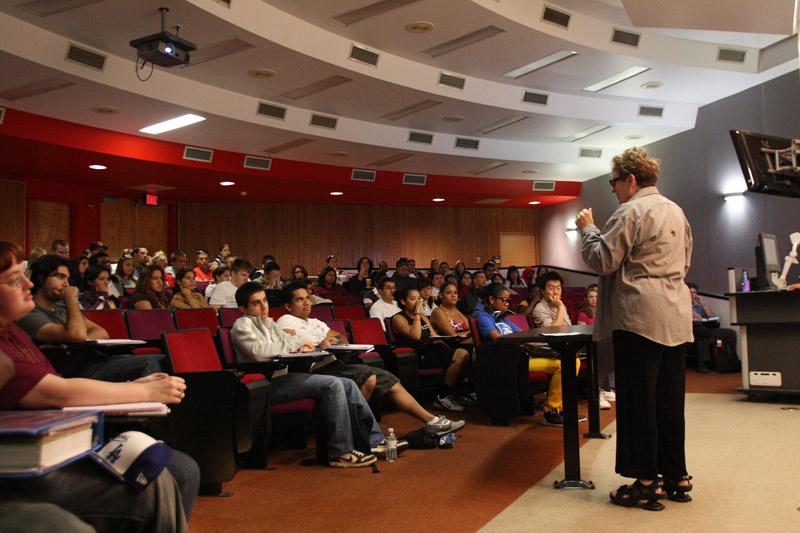
Students who were unsuccessful in enrolling in classes this fall may have a greater chance of enlisting in classes for spring thanks to the allocation of approximately $1.8 million. CSUN will use this money to open new classes and provide student services for the spring semester.
Currently, meetings are being held to discuss how these classes will be added. One topic up for discussion is how the university will add more classes without changing the number of students currently enrolled at CSUN.
“We cannot exceed the target and cannot increase the number of students,” said Harry Hellenbrand, provost and vice president of Academic Affairs.
Because the money is coming from a federal stimulus package, there are rules that must be followed.
One of these rules states that the university may not admit more students.
“This is confusing for everyone involved,” Hellenbrand said. “We need to add classes without enrolling more students by order of the state.”
Hellenbrand said that at the moment he is uncertain as to how this will be approached.
“This may mean smaller size classes,” he said.
A $650,000 chunk will be used to add course sections to help students graduate. Hellenbrand estimates that about 150 new classes will open in the spring. A slightly greater concentration of these classes will open in the College of Education, Humanities and Social Sciences departments because they are more impacted.
These new classes would benefit many students who found themselves in situations similar to Josh Herman’s. The biochemistry student said that many of the classes he needed to take were already closed by the time he was allowed to register.
“I went to about 50 classes to try to add. I even started taking classes that I didn’t need because everything was full,” said Herman, 21.
It is expected that these new classes will provide an advantage to students who are a few semesters away from graduation.
“My guess is most will be upper division because the interest is to make people flow through,” he said.
To teach these new classes, Hellenbrand said more professors may be hired, but professors who are presently teaching will likely take on more classes for next semester.
Seven percent of the money that is being allocated is going to pay the salaries of the professors teaching these new classes, and one third will be used to support the instruction.
Approximately $164,000 will be given to the colleges for department-based advising (especially for students who are taking five or more years to graduate, informally known as “super seniors”), increased peer advising and mentoring, college-based tutoring and additional tutors in developmental math courses. Such support services also include tutoring as advisement.
The Learning Resource Center will receive $166,000 for augmented tutoring and writing lab support. EOP will also collect $115,000 for augmenting advising services and peer advisement.
“We are funding support services in the spring because we want to make sure we advise correctly to students so they graduate,” Hellenbrand said.
Support services have a higher priority in the spring semester because of the greater number of students graduating. It is crucial that enough services be available to ensure students are on the right path towards graduation, Hellenbrand said.
These resources are only available for one-time use.
“Funds will only last until the spring semester. I would like to roll the money over to next semester because of the budget, but we cannot do it,” Hellenbrand said.
“This is very confusing for everyone involved. We are using money in an unnatural way. There are too many rules on how we can and can’t spend it,” he added.
This is the first time CSUN has had to allocate money because of a mistake that was made during the calculation process that distorted all estimates.
“It’s very complex. From my understanding they added money wrong. Someone made a mistake,” said Hellenbrand.
Another factor besides human error that contributed to the tilt in financial calculation are the furlough days professors were forced to take this semester.
“Furlough (estimates) were done in theory in summer so it was expected the budget would be wrong,” Hellenbrand said.
The budget was expected to be wrong because it was too early in the year to have a number that would reflect exactly how furloughs would affect the budget.
Before each semester begins, each college is asked to give a guess of what their demand is and prioritize in light of their budget based on judgment of what their needs are.
“Furloughs have skewed this,” said Hellenbrand. “Now, we need to make sure these numbers add up.”




